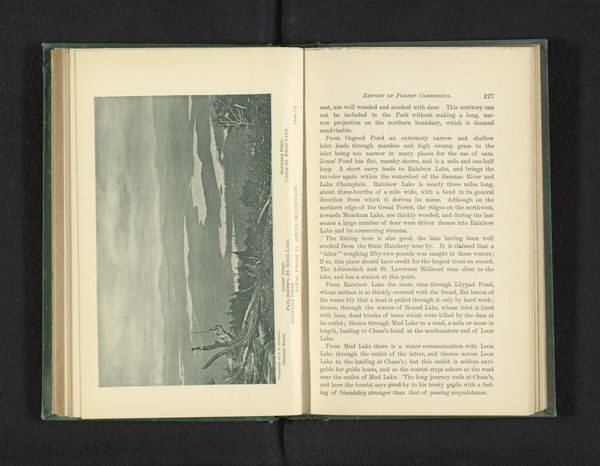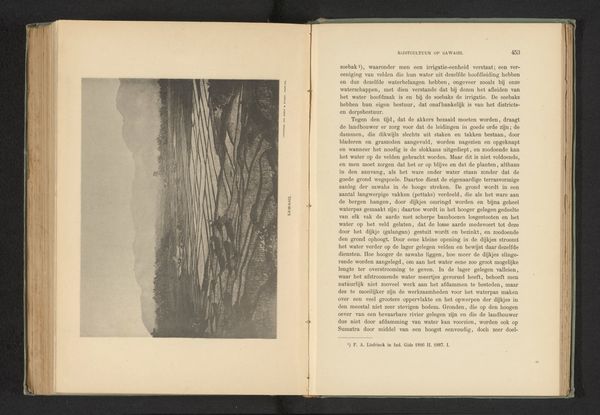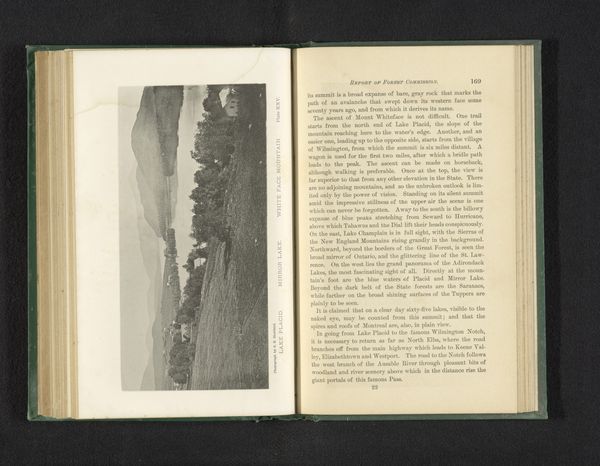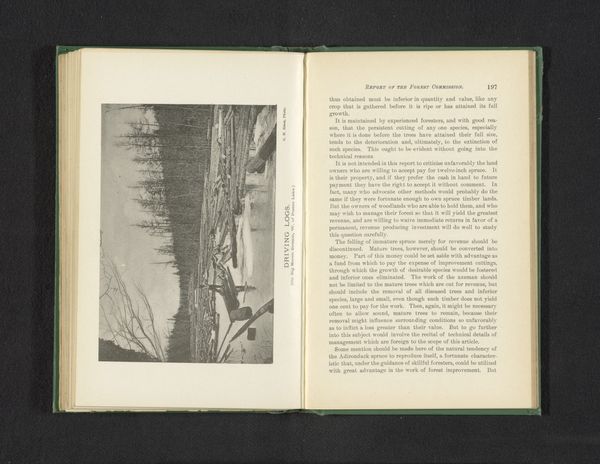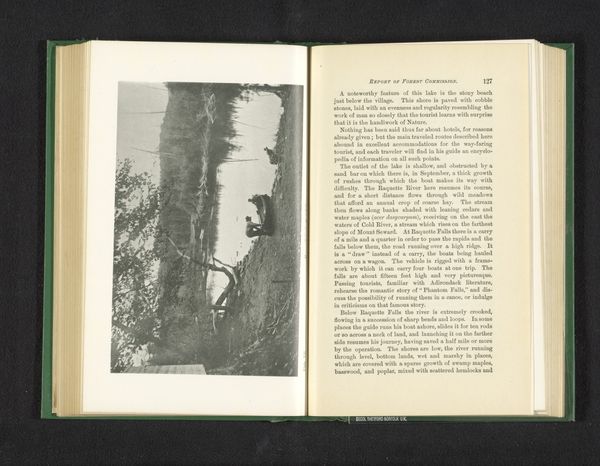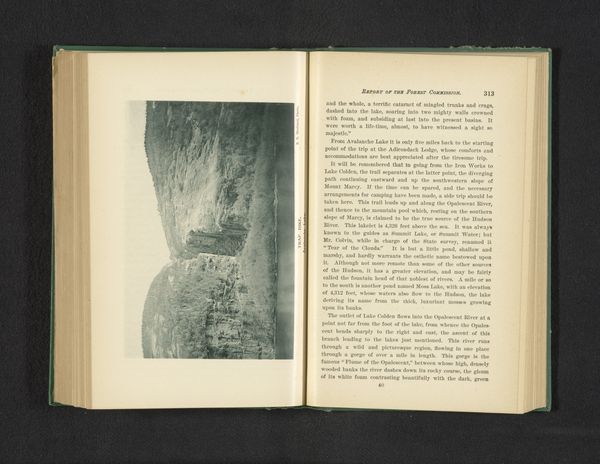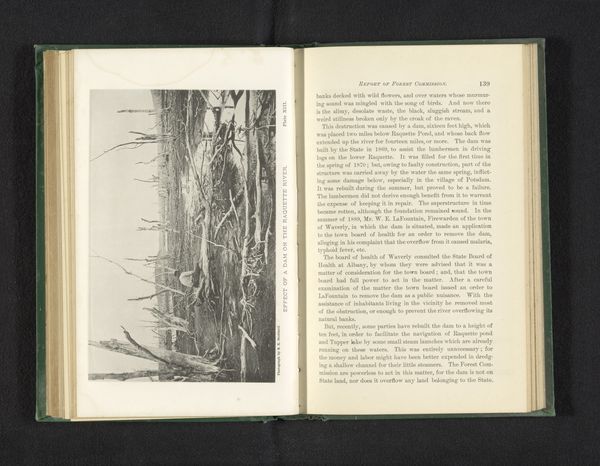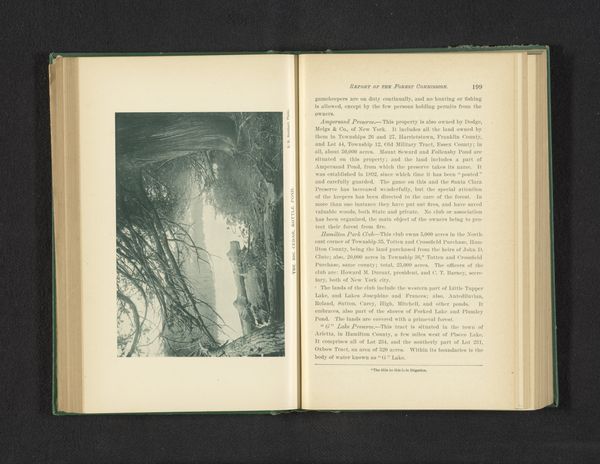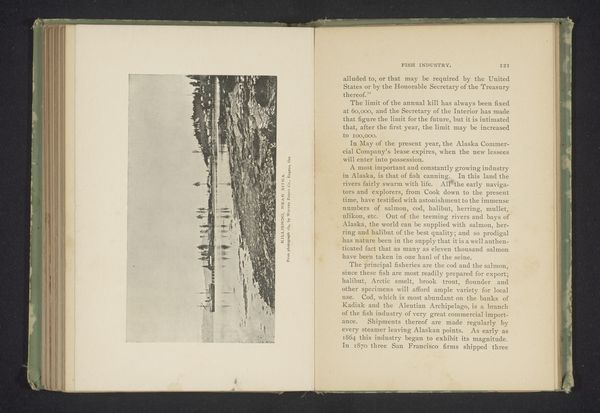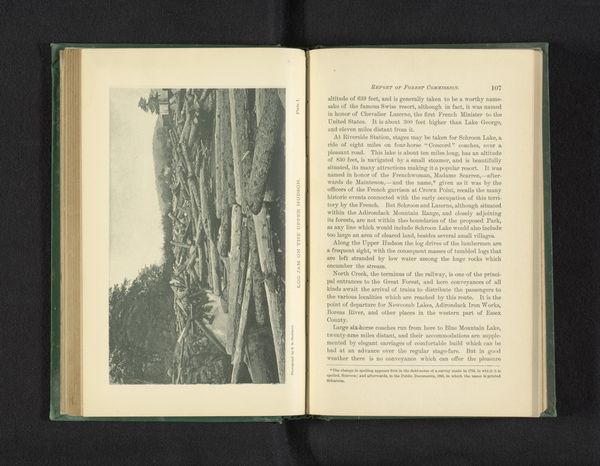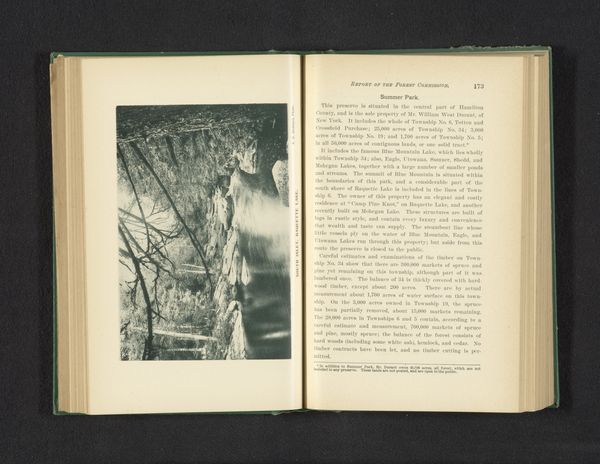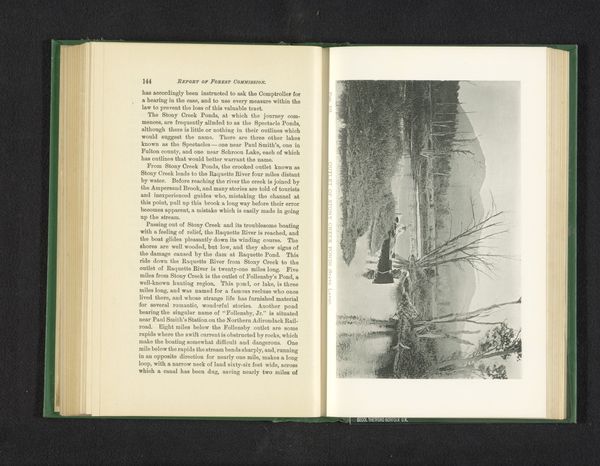
Dimensions: height 113 mm, width 177 mm
Copyright: Rijks Museum: Open Domain
Curator: This image just pulls you right in, doesn’t it? It’s almost overwhelming, like staring into some deep, still secret. Editor: Absolutely. What strikes me immediately is the stark contrast between the light and shadow, which lends an almost brooding atmosphere. It reminds me of a classic film noir still, and I can't help thinking about how landscape photography, particularly of untouched wilderness, has historically served to mask settler colonial narratives. Curator: I see that, yes, that kind of unease is palpable, but look at how Seneca Ray Stoddard plays with the reflections! It’s dizzying, right? Stoddard captured "Big Tupper Lake" in 1891. I imagine he was just trying to convey its almost mythic quality, you know, its allure for outdoor enthusiasts, its picturesque beauty. Editor: Certainly. Stoddard, known for his work promoting the Adirondacks, was savvy about appealing to tourism. It’s worth considering who gets to access and enjoy these landscapes and who has historically been excluded or displaced. This particular gelatin-silver print and images like it aided in promoting a very specific idea of American identity intertwined with nature, that often disregarded indigenous claims and understandings of place. Curator: Well, to me, it speaks to a more timeless human impulse too— that feeling of awe, of smallness in the face of nature’s vastness. I imagine setting up his equipment then, how difficult it must have been, so bulky. And now we carry cameras in our pockets! Editor: But the impact is completely different. Mass accessibility has, arguably, led to a kind of visual saturation and a loss of that feeling. But, back to the socio-political implications, these pristine, seemingly empty landscapes are potent symbols. Think about how they intersect with ideas of manifest destiny and resource exploitation. Curator: I hear you, and you are so right to point that out. Maybe looking at images like these allows us a moment to examine our own assumptions about history and landscape, to sort of tease out these layers of meaning we might not otherwise recognize, that feeling we may otherwise misinterpret. Editor: Exactly. By acknowledging those layers, we can move towards a more informed understanding, not just of art, but of our relationship with the world. That's how we honor both the aesthetic achievement and the complex legacies.
Comments
No comments
Be the first to comment and join the conversation on the ultimate creative platform.
